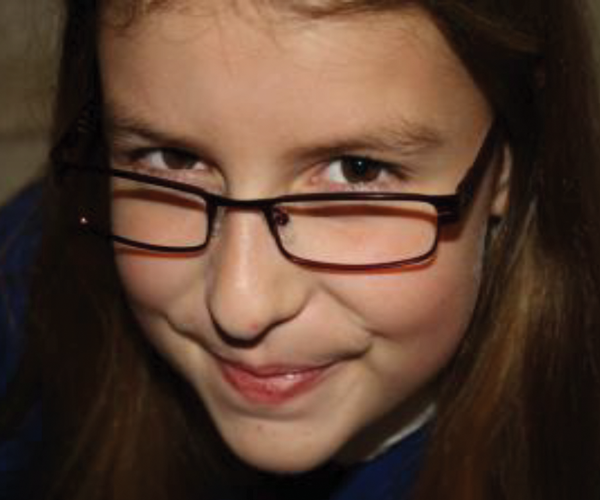It’s incredibly rewarding to fit a child’s first pair of spectacles and see their face light up; looking around to see the wider world for the first time. Sometimes it is so obvious that even the most reluctant parent will realise what a difference the new spectacles are making.
When it comes to paediatric eye care and specifically the dispensing of spectacles, it is fundamental to ensure the highest standards of dispensing are achieved on every occasion regardless of circumstance. This is surely a given for any self-respecting practitioner? When the dispensing of spectacles was deregulated in 1985 [1], the importance of fitting spectacles to children was thankfully understood and can only be conducted by a qualified practitioner in the UK. Registered with the General Optical Council (GOC), a dispensing optician is the most likely practitioner to undertake this role.
GOC registrants have a duty of care to ensure that dispensing to children is carried out in person, or if the function is to be conducted by an individual who is a non-registrant, the optometrist or dispensing optician should ensure that the said individual has appropriate knowledge to undertake this task under supervision. Should the latter be applicable, the professional should maintain a level of vigilance and have means to intervene at any point during the dispensing process.
Adjusting to the need to wear spectacles
In the eyes of any parent they have produced something special, perfection in every sense. Parenthood is a journey of new beginnings that brings great pride and unprecedented happiness. The biggest fear for many parents is the prospect of potential harm, pain, injury or other disabling situations to their child. So when there is a realisation that there is a deviation from perfection, the feelings exhibited can be both troubling and deeply worrying. For the parents there is a whole host of negative and positive feelings, arguably more negative.
From the perspective of the practising dispensing optician, experience and skill in communicating bad news with patients is part of the competency requirements. Often this can occur when a parent attends the hospital eye service for the first time and is informed that their child requires a spectacle correction. By the time they reach the practice with a prescription they are often anxious and worried about the next steps.
It is vitally important that the practitioner is conscious of the psychological impact that this may cause. In situations like this, there must be a great deal of compassion and understanding demonstrated. Providing a comprehensive explanation of what is involved during the provision of spectacles, as well as outlining ongoing care, will ensure that a degree of trust is established by both the child and parent towards the practitioner.
Some of the negative thoughts exhibited by parents might include: Will my child be different? Surely it’s not forever? How long will they need to wear them? Whose fault is this, mine, my partners? Why my child? What is wrong with their eyes? And, in some very extreme cases, will they go blind? None of the questions listed should be deemed as a difficult or silly question by any practitioner. The practitioner must become the counsellor, the shoulder to lean on and the person parents entrust to make the problem manageable for their child.
Conveying bad news to anyone is undoubtedly an unenviable task, but it needs to be done in a professional manner with the utmost sensitivity. Throughout the discussion, the balance between avoiding pessimism, providing hope and being realistic, needs to be maintained. Therefore, it is very important to have the spectacles dispensed by a qualified person who has regular experience of dispensing, not just examining eyes, to ensure that the child is provided with an optical appliance to accurate measurements and that it is fitted correctly. This becomes much more relevant if the child has an amblyogenic condition and is even more acutely important if there is anisometropia present, as it is imperative that the child is not given the opportunity to bypass the prescribed correction by looking over the top of the spectacles.
Support mechanisms
It is inevitable that there will be occasions where both the child and parent will find it difficult to come to terms with the realisation that spectacles are required. The child needs time to feel positive about the imminent changes in their life and understand why they need to wear spectacles. Similarly, when the eye examination takes place in practice, it is sometimes best not to proceed with frame selection right away. Often, best practice would be to introduce the concept of spectacle wear by showing one or two frames and making the child aware of the surroundings and people involved in the process. It is not unusual for a selection of frames to be taken away by the parent to commence the process in the comforting and familiar surroundings at home. Getting accustomed to the feel on the nose, behind the ears and the general appearance will almost certainly be advantageous at this stage.
Additionally, there might well be occasions due to personal experiences where the parent might be reluctant to fully engage. It is conceivable that the stigmas attached to spectacle wear many years ago created uncomfortable memories to the point a parent does not wish the same for their child. Equally, in an era where fashion and appearance is a priority for some, the desire to see a child wear ‘designer’ frames with little or no understanding of the need to have properly fitting spectacles can of course present problems for the practitioner. In some cases this can be exasperated by the purchase of spectacles by parents via the internet which is most alarming and almost certainly not in the best interests of the child.
Dispensing process
Dispensing spectacles to a child is a highly skilled and complex competency that requires a significant degree of patience on the practitioner’s part to achieve the desired results. Unlike dispensing to an adult, it is likely that the child will visit the practice more frequently between eye examinations for various spectacle repairs. Again, by outlining the professional services provided during initial and ongoing discussions, many unfortunate situations where the spectacle performance and eye development is hindered due to ill-fitting spectacles will almost certainly be avoided. Care must be taken to educate the child and parent as to what is correct in terms of fitting and comfort. Should there be a deviation from what is deemed correct, there should be immediate provision made by the parent to have an alteration carried out.
Figure 1: Child with badly fitting spectacles.
Figure 2: Child with properly fitted spectacles.
Step by step
New spectacle materials and more thoughtful design have had a big impact on the way that children are fitted. Thankfully, the days when only NHS spectacles were available to most are long gone, and the NHS voucher (issued in the UK to any child under the age of 16 or under 19 when in full time education) can offer a large and varied selection of frames and styles. Parents need to be informed about the best eyewear for their child, any additional cost and whether there are any alternatives.
“Dispensing spectacles to a child brings challenges which can be overcome largely by means of effective communication.”
Dispensing spectacles to a child brings challenges which can be overcome largely by means of effective communication. The experienced practitioner guides the frame selection at the outset, and develops the trust of both the child and the parent. It’s always tricky for example when a large rectangular frame is wanted and a small round frame is what is needed. Clear professional guidance and an understanding of the requirements early on, help this process.
Sometimes a dispensing optician can forget that they are dealing with a person, it’s not just about the eyewear; it should always be remembered that someone must wear the results of the dispensing being undertaken. Put simply, it’s worth asking every time, “Would I wear those spectacles?” or, “Would I let my son / daughter wear those?” or even, “Am I proud of that job?”
A well fitted frame is vital to success. In terms of the bridge, all too often we see children looking over the top of their frames which hinders development and causes unease cosmetically for many. This is something that is easily rectified by selecting a frame with an appropriate crest height and / or correct pad and bridge parameters. On the basis that the face is likely to be flatter in the earlier years, the need to incorporate vertical heights above the horizontal central line is most definitely a factor to consider. Inducing a significant degree of prism or differential prism because it has not been considered is arguably unacceptable.
In terms of vertex distance, when does the practitioner consider when to make effective alterations? Is it at an early age, when retinoscopy is most likely the process for determining the prescription, or at a slightly older age when the child is responsive? Irrespective, the practitioner must make appropriate decisions and record accordingly.
It is widely recognised that the most tangible measure of a patient’s satisfaction with their eyecare is how well they see. How well they see is dependent on the spectacles they are provided with. There are occasions when paediatric spectacle dispensing leaves a lot to be desired; tragically, it occurs on a staggeringly regular basis.
References
1. Health and Social Care Act, 1984:
http://www.legislation.gov.uk/ukpga/1984/48/contents
Last accessed February 2017.
COMMENTS ARE WELCOME







